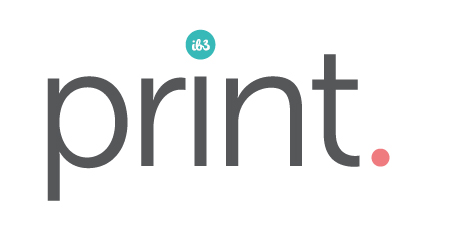The design and production of print is an art. Whether it’s a business card or a brochure, the same rules and processes apply, differentiate your business and strengthening your brand identity. At ib3, we use our creative expertise from start to finish to deliver the product that you want. So what is there to think about when starting a print project (no matter how small)?
Start
To start with, there is of course the planning. This was covered in an earlier blog so, if you’d like to know more, follow that link! Once the planning has been undertaken and the outcomes agreed, the creativity can begin.
Brand Guidelines: Understanding what is allowed sets our designers expectations on creative freedom. Strict guidelines set out a defined route in which we can take. The benefit of this is a clear, consistent approach when delivering the end product. Creative freedom still exists, but with certain restrictions. With less-strict guidelines, different creative routes can be undertaken. Colour, typeface and imagery can all be experimented with in order to produce outstanding print. Clarity from the beginning of any print project is vital to it’s success. Guidelines don’t have to be one hundred page documents covering every detail, they can be small, concise documents standardising certain elements of your business.
We work with clients with both of the above guidelines, so we are perfectly placed to advise on all print projects no matter the size.
Target: Who is the target audience for the project? Is it a business card for a client? Who reads this internal newsletter? Is it a B2B brochure? Understanding and highlighting the intended recipient can impact the design of print. Designing with a recipient in mind can alter the flow of information, the imagery used and the look and feel in the paper quality and finish (I will cover the options on these later on) If it’s a printed piece intended for use in new sales pitches or for existing clients, then budget dependent, more complex finishes may be used to showcase and highlight your business from the competition.
Call to action: This is the imperative in any creative work. What do you want people to do with the card, brochure or leaflet? Are the correct and most important contact details readily available for the recipient? Pretty design and bold colours are great, but so what if there is no action at the end? Don’t be sucked in to “fluffy” project that don’t deliver what you set out to achieve.
Layout: Interaction is extremely important. How information, data and imagery flows has a direct impact on the success of print. We place a lot of focus and effort into the layout part of our projects. Balancing creative layout with user experience is a fantastic skill. Engaging with the recipient and adding value is what all outstanding brochures, leaflets and catalogues deliver. Interaction can come from folds, cuts, and flaps. They don’t have to be standard booklets. That’s where our experience comes in.
Colour: This is a whole other area! Michelle, our senior design took a look about what different colours mean and how it can impact your image. It is this attention to detail and understanding that goes into all of our colour suggestions.
Me too: Don’t be this. Be different!
Finish
Finally, what is your design going to be printed on? With all of the above in mind, what is going to get the most out of the artwork?
We think about stock. Gloss, matt, silk or uncoated. Which stock reflects your business identity and the message that you are trying to get across?
We think about weight. Imagine the different impressions you get when a potential client gives a flimsy 200gsm business card versus a luxurious heavy-weight 600gsm card. Always aim to impress.
What do the different finishes deliver?
Lamination: Silk lamination provides a soft, silk-like finish, is water-resistant, is tear-resistant, and complements vibrant colours. The effect could be glossy, matt, or satin.
Varnishes: A varnish is a liquid coating applied to a printed surface to add a clear glossy, matte, satin, or neutral finish. UV (ultraviolet varnishing is a process for achieving an even more striking coating.
Varnishes can be used through-out or as a ‘spot UV varnish’ where the varnish is applied to chosen areas to highlight or drawn attention to parts of the design
Embossing/debossing: Embossing creates a raised impression on the stock, debossing creates a depressed impression. It leaves a classy subtle effect that is seen on both the front and back of the stock.
Foil: A foil layer is bonded to a certain material by a heating process. Foil comes in many block, metallic and pearlescent colours.
Die-cutting: Die-cut involves cutting irregular shapes out of paper or board using a die. Due to sheer number of options available, dies are normally custom made, but printers usually have some standard dies (such as for rounded corners).
Letterpress: A surface with raised letters or pattern is inked and pressed down to reproduce an image in reverse on the material (think of a glamorous version of potato printing!)
Silk screening: A technique that uses a woven mesh to support an ink-blocking stencil. The stencil forms opens areas of mesh that allows the ink to transfer through to the paper or board.
To conclude, there is a lot of thought and creativity that can go into print projects. So, why settle for something that will just end up in the recycle bin?
Thanks for reading,
Frank
frank@ib3.uk
